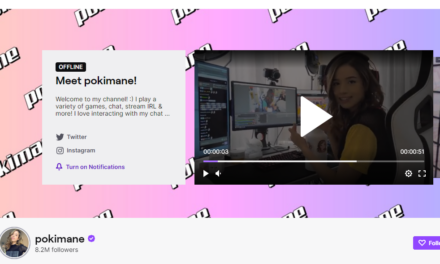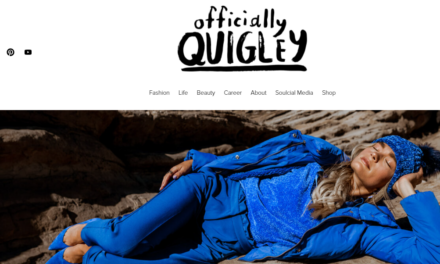Want in on a little secret?
Content entrepreneurs are better positioned than any other type of entrepreneur for marketing success.
Why? Your business is all about content and audiences. And that’s what marketing is about too.
A #contententrepreneur secret: You are better positioned for marketing success than any other type of #entrepreneur, says @AnnGynn. #creatoreconomy #contentmarketing Click To TweetThink about it. An entrepreneur opens a bakery. In the early morning hours, they bake their products. In the later morning and afternoon, they sell their goods. And in between, they must figure out how to find prospective customers and bring them to the storefront to make a purchase. They are two distinct operations – marketing and running a business.
On the other hand, a content entrepreneur starts a newsletter. In the early morning hours, they comb websites to research story ideas. In the morning, they jump on social media to see what their audience is talking about and connect with them on those relevant topics. In the afternoon, they create the newsletter (i.e., product). It will be distributed and promoted through many of the same “research” channels where their audience already is. That’s marketing during the course of business operations.
In fact, the very definition of content marketing is similar to the strategy of a content business:
“a strategic marketing approach focused on creating and distributing valuable, relevant, and consistent content to attract and retain a clearly-defined audience — and, ultimately, to drive profitable customer action.”
So to create your content business, you already know your audience’s content consumption habits, where they are, what they need, etc. Now you’re ready to use all that information to market it organically.
The Tilt Advice
Where should you go?
While we advocate a one-channel focus for your content business, we recommend a more-than-one-channel focus for your marketing.
Stick to 1 content product channel, but use multiple content channels to market it. #contententrepreneur Click To TweetGo to where your audience already is talking and sharing about your business topic. Interest-specific groups on social media can be great for this. Get a feel for the room, then start talking.
But don’t talk all about yourself. Think of it as a networking event or cocktail. Chat briefly about yourself and/or your business when asked or relevant. Spend most of the time thinking and reacting to the person you’re talking to.
You don’t want to get the reputation of being that person who never shuts up about themselves. Community members will equate your name with meaningless self-promotion and never stop to read what you’re saying.
Don't get the reputation of being that person who never shuts up about themselves or their businesses. Be helpful to prospective audiences. #contententrepreneur Click To TweetTamer Gargour is following this route. Though his business is all on Twitch, he joined groups talking about Twitch streaming on Facebook and Discord. He posts often and answers members’ questions. He even became a moderator in some groups to raise his profile.
He also networks on Twitch, popping into others’ livestreams around his topics. He hopes being an active audience member will encourage those streamers to return the favor when he’s live (and that can attract those streamers’ audiences too.)
Hint: Don’t forget a good hashtag strategy can further the reach of your social media posts.
What about being a guest?
Keep going outside your owned channels. Reach out to others’ blogs, podcasts, video shows, etc. Learn who accepts guest blog posts or talks with guests on their programs. Then, make a pitch to be their guest.
How do you make a great pitch? Think about the host. What’s their content tilt? What content could you provide that they would be interested in?
Marketing Tip: Go as a guest. Write guest blog posts. Be a guest on podcasts. Deliver something that's valuable to your host, says @AnnGynn. #contententrepreneur Click To TweetHint: Make sure to come up with an idea that the host hasn’t already addressed.
Explain who you are briefly. No long history of your life, your dog’s name (unless the content is about dogs), or what you think of their local sports team. Stick to why you are a credible person to talk about the topic. If you have a following, share those numbers. Promise to promote the content on your channels. (Hosts like opportunities to widen their reach too.)
Has the host shared rules for guest submissions or proposals? Follow them. For example, if they want a full article rather than a pitch, submit that. Or if they ask prospective podcast guests to fill out a form, do that.
Short on time? Stick to guesting on your primary content platform. Podcasters Amy Wilson and Margaret Ables of What Fresh Hell say they find the best way to get more podcast listeners is to get word directly to people who already love the medium. “It’s very connection-centric,” Margaret says. “And those connections raise all the people in them.”
What will you do with this new attention?
As you attract new people, you better be ready to welcome them for the long term. (Yep, it’s time to convert them into long-term audience members.
Once again, your content business has the upper hand on the entrepreneurial bakery. Your new audience members don’t have to travel to get to your product. They’re already there. But they won’t be for long if you don’t invite them to stay.
How? Invite them to become subscribers for your free content in exchange for their email address or other contact information. Create calls to action (CTA) that fit with your content product. That could be a note at the end of a blog post, a mention in a podcast or video, or a pop-up screen on your website.
Convert new visitors, fans, and followers into subscribers. Create calls to action (#CTA) in your #contentmarketing that fit with your content product. #contententrepreneur #creatoreconomy Click To TweetHint: Keep your subscriber forms as short as possible. The more fields you ask them to complete, the greater the chance they won’t complete it.
In your invitation, let the new subscriber know what to expect. Outline the topics, detail your distribution frequency, and ask something that invite’s a reply from your new subscriber.
We love how Ann Handley makes the ask for her newsletter Total Annarchy. Her confirmation subject line? Welcome? I have a question for you … And in the body of the email, she writes, “Why did you subscribe to my newsletter? What do you hope to learn here?”
And that’s really the key to baking up some great early marketing for your content brand. Promote a brand where your audience knows you’re going to deliver a product they want or need and you’re going to welcome their presence.
Next step? Build a marketing plan for your subscribed audience to convert them into buyers. But we’ll get into that in a later issue.
About the author
Ann regularly combines words and strategy for B2B, B2C, and nonprofits, continuing to live up to her high school nickname, Editor Ann. An IABC Communicator of the Year and founder of G Force Communication, Ann coaches and trains professionals in all things content. Connect with her on LinkedIn and Twitter.










